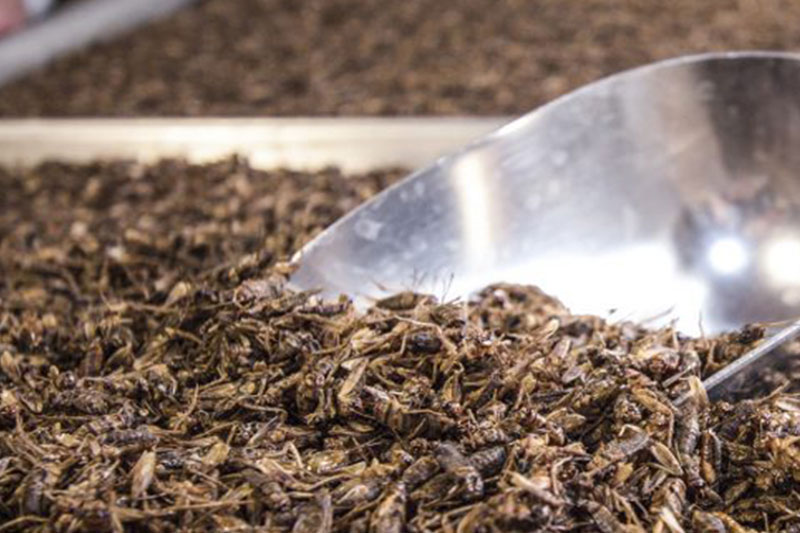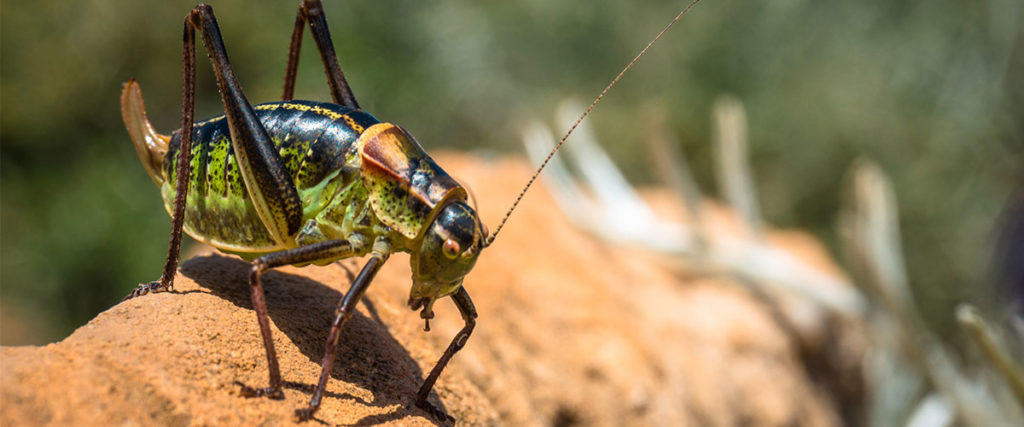Will 2020 be the year that eating and breeding crickets go mainstream? Vietnamese startup Cricket One certainly hopes so. Read on to learn more about their plans to provide the world with this unusual alternative protein superfood.
According to the Food and Agriculture Organisation (FAO), the world population is expected to reach almost 10 billion by the year 2050 (that’s about three billion more mouths to feed than in 2010), meaning that the demand for major protein sources will more than double. As global awareness of the meat industry’s environmental impact continues to grow, so too does the urgent need to find and produce alternative protein sources. Enter Cricket One, a Vietnam-based startup that seeks to feed the future with sustainable and affordable protein from crickets and accelerate the normalisation of insect consumption by making the best and healthiest ingredients from crickets for food, beverages, and cosmetics.

For co-founder Bicky Nguyen, a career in sustainability wasn’t necessarily always on the cards. Having attained multiple degrees, none of which she felt particularly passionate about, her path to founding Cricket One was filled with twists and turns. “I’m not super proud of my education because I think I took a completely wrong path,” Bicky admits. “I got a degree in International Business Relations, then I went to the United Kingdom for another degree in Public Law, and then I finished another degree in Corporate Banking, but then I didn’t like any of them.” After working in quality control in the UK for a year, she returned to Vietnam to work for the Government of Israel under the Ministry of Trade. It was there that she first met her soon-to-be co-founder, Nam Dang. The duo’s first collaboration was a tech company called Mimosatek, which they co-founded together in 2014. The startup aimed to help farmers improve their farming practices by making use of Internet of Things (IoT) agricultural technology to maximise productivity. “We produced a set of sensors and an app on the IoT platform,” Bicky explains. “The app would tell farmers how much water and fertiliser they need to give to the crop.” It wasn’t long after co-founding Mimosatek that Bicky and Nam decided to make an exit together to pursue a new idea: Cricket One.
You might also like Cricket Protein Could Be the Next Food Innovation. Here’s How.

Founded by the pair in 2017, Cricket One aims to promote crickets as a viable and readily available food source for the masses. Crickets have long been hailed as a ‘superfood’ due to their high nutritional nature; packed to the brim with protein, crickets are rich in non-dairy calcium, containing all the essential amino acids along with vitamin B12 and omega-3 and 6 fatty acids. Crickets also have a much smaller environmental impact, requiring 10 times less feed and 2000 times less water than if you were to produce the same amount of beef and are estimated to be 20 times more efficient as a source of protein than cattle, addressing both the issue of malnutrition and production efficiency all at once. Cricket One also seeks to improve the livelihood of poor farmers – with an extensive network of 30 farmers, the firm is committed to not only sustainability but social impact. “We build an ecosystem with local farmers and help them to earn extra income,” Bicky mentions. “We provide free training and provide them with the equipment to farm crickets first, and then we buy it by the kilo. They can earn four to six times their regular income, which can improve the lives of the whole family.”

Although it may seem unappealing at first, insect consumption is actually pretty common in many places around the world. According to the FAO, an estimated two billion people eat insects every day, with over 1000 species of insects consumed in 80% of the world’s nations. In fact, insects are increasingly recognised as a sustainable alternative for the future as compared to more conventional livestock. Although a food staple in certain countries, the concept of consuming crickets is still unfamiliar territory to many in the West. To combat this issue, Cricket One is taking steps to ease consumers into this practice. “The first thing we do is we don’t try to sell the whole cricket,” Bicky laughs. “We make it into powder and you can really do anything with powder. We present something that won’t attack their vision or imagination. We also work very closely with brands and food producers to develop finished products from the powder itself. You won’t see anyone trying to put a whole cricket on your plate.” With the creation of speciality products like cricket protein shakes, cricket pizzas and even crickets dipped in caramel or chocolate and sprinkled with gold flakes, Cricket One is clearly determined to override any prejudice or ingrained feelings of taboo you might have. Still, Bicky believes there is room for improvement: “At the end of the day, the market needs more daily staple foods rather than presenting something fancy. Things like bread, pasta and meat products, that’s the future of the market.”
Although crickets are commonly agreed to be an eco-friendly, alternative source of protein, it will still be years before a culture in which people are comfortable with eating insects can really be developed, according to Bicky. It’s her belief that these food alternatives ought to be available to everyone, even those in less developed countries. “Sustainable alternatives are expensive and there isn’t enough supply for the growing populations,” Bicky explains. “At Cricket One, we see that we have a solution to solve the problem by supplying a green sustainable food ingredient to the world. It has to be affordable and it has to be scalable to solve the mass market, to solve a growing population. We believe in this industry and we believe in this potential.”
Related Articles
This Australian Founder Convinced Burger King’s CEO to Back His Meatless Burger
Meet the Brains Behind Asia’s Snacking Phenomenon The Golden Duck
The Impossible Burger Hits the Shelves in the US. Will Asia be Next?





